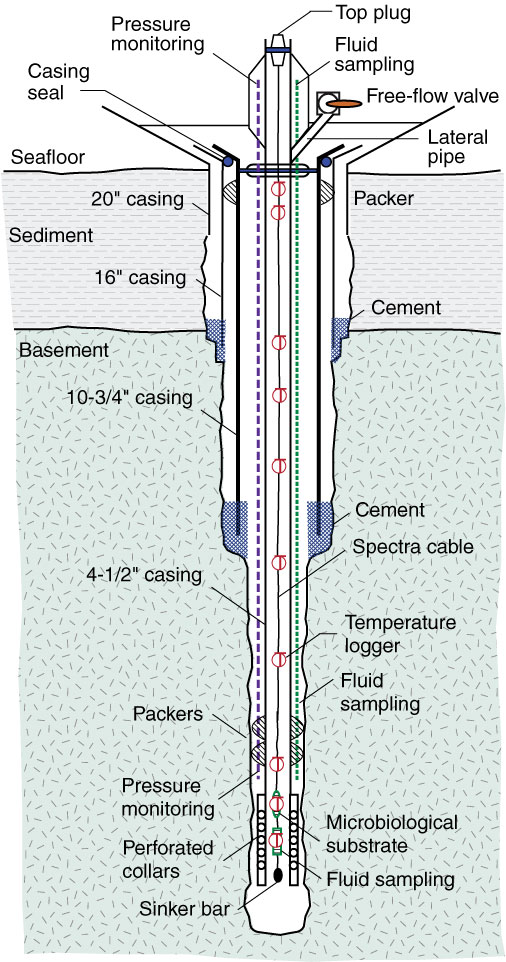
Figure F2. Cartoon showing features of new CORK systems deployed during Expedition 327. Characteristics of Expedition 327 CORKs that differ from earlier generations of borehole observatories include perforated and coated drill collars and casing at depth, two kinds of CORK and casing packers (inflatable and swellable), a casing seal between 10¾ inch and 16 inch casing strings, a tapered gravity plug for a top seal, and a free-flow valve in the L-CORK wellhead. Additional features that Expedition 327 CORKs have in common with the last generation of CORKs deployed during Expedition 301 include main CORK seal in the throat of the reentry cone within 10¾ inch casing; primary CORK casing diameter of 4½ inches; up to eight fluid, microbiological, and pressure sampling lines, with ports and screens at various depths; and a mixture of fluid and microbiological sampling systems suspended on Spectra cable at depth. Temperatures are recorded with autonomous sensor and logging instruments incorporated into the fluid and microbiological samplers or hung independently from the Spectra cable. Specific configurations for each Expedition 327 CORK are shown in later figures and tables and discussed in the text.

Previous | Close | Next | Top of page